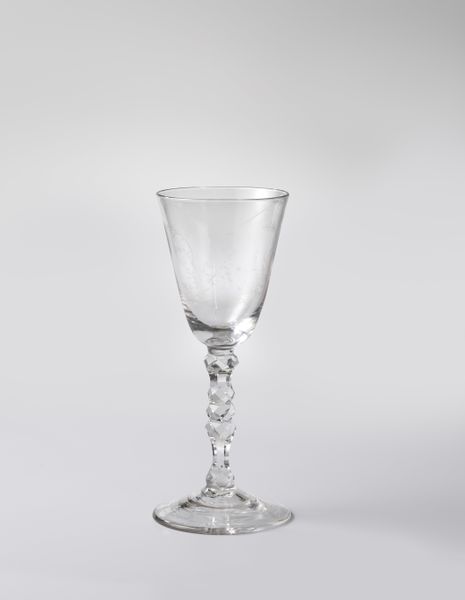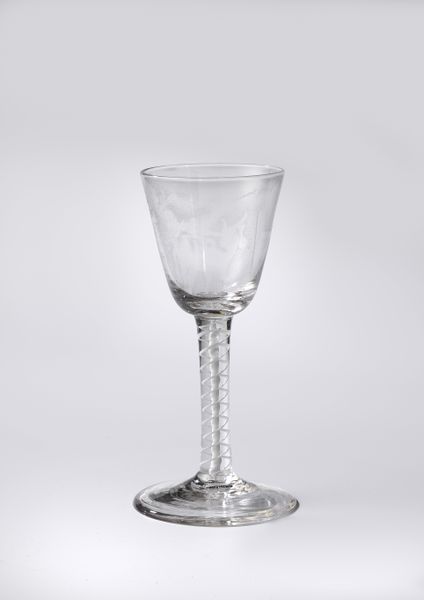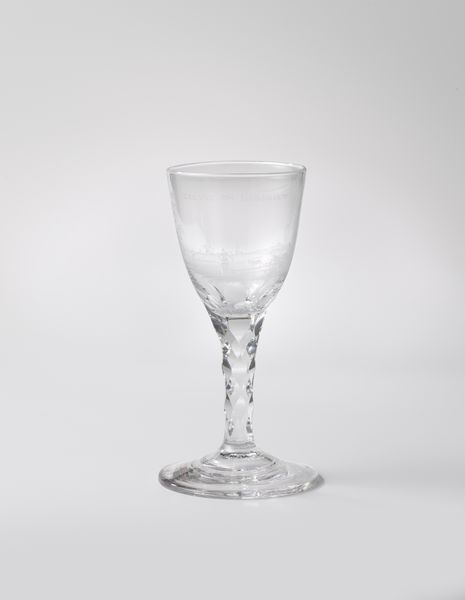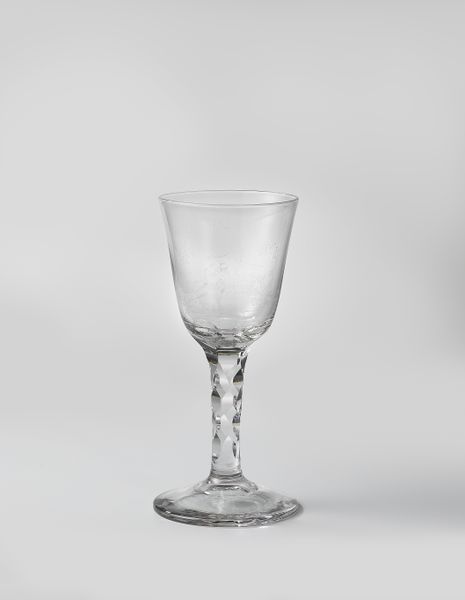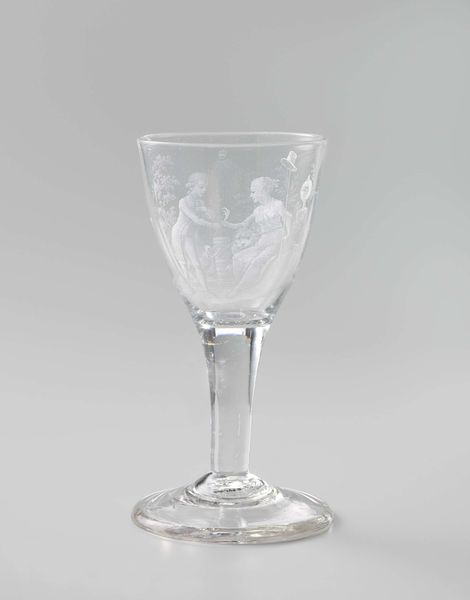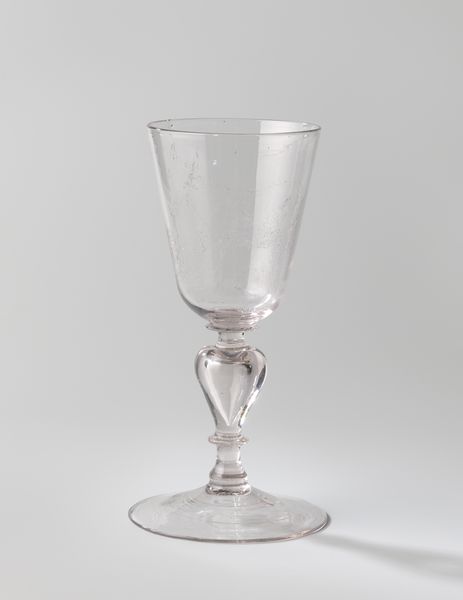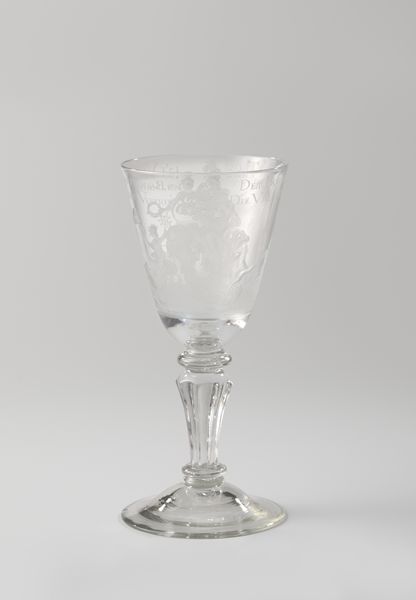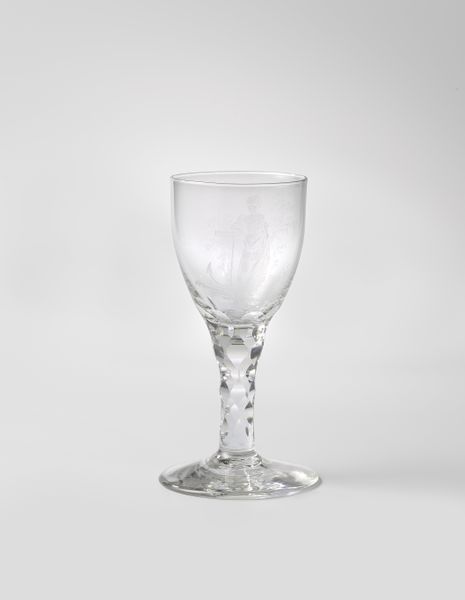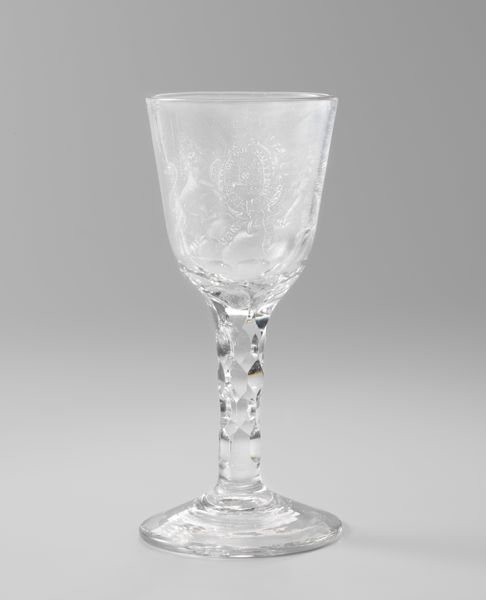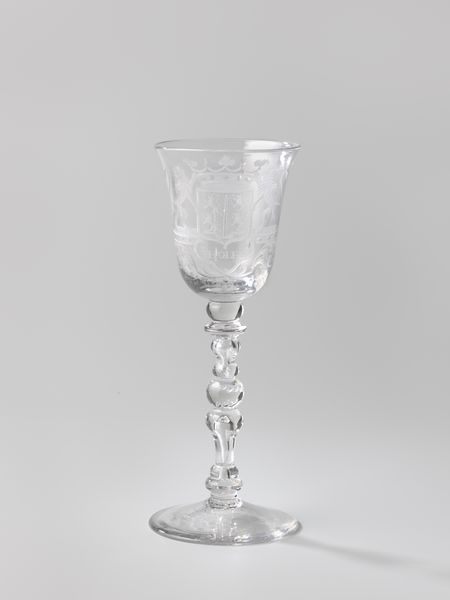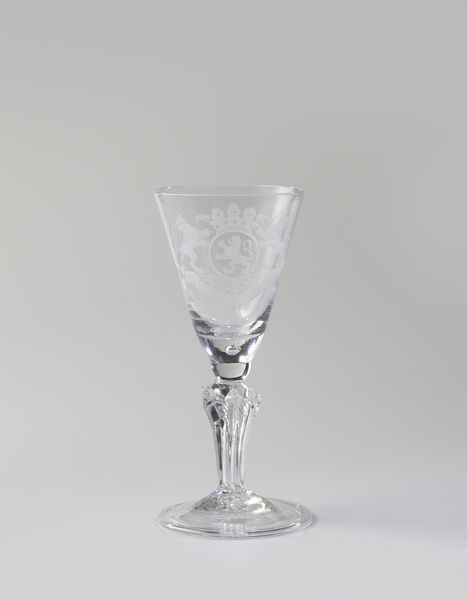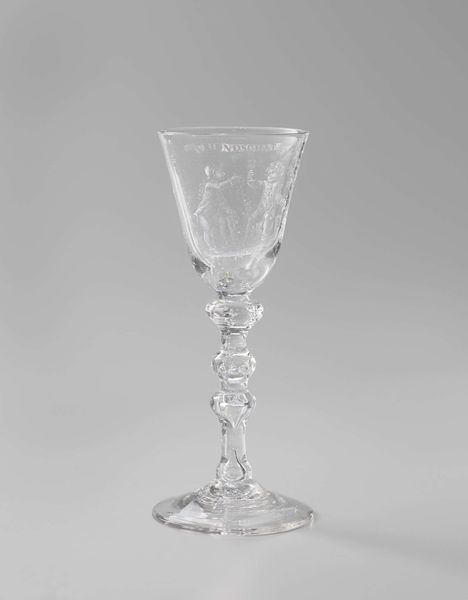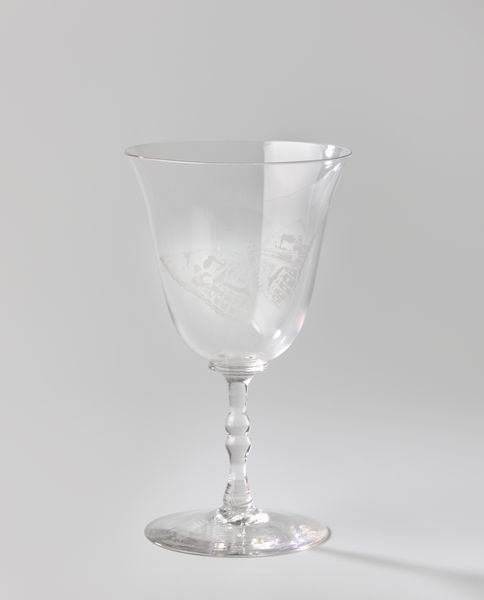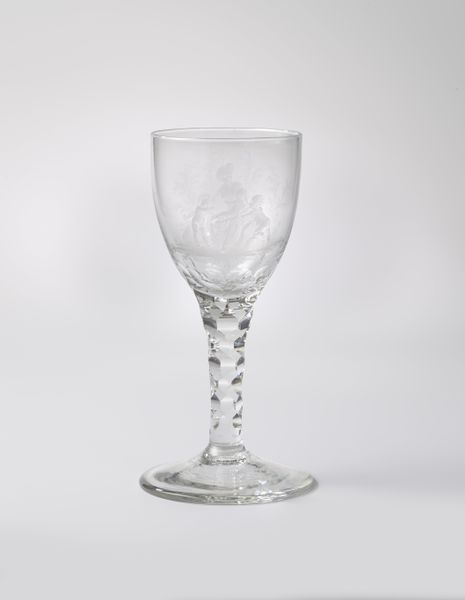
Dimensions: height 19.1 cm, diameter 9.1 cm, diameter 9.1 cm
Copyright: Rijks Museum: Open Domain
Curator: Here we have an example of a Baroque-style drinking glass, “Kelkglas met een jongen en een meisje met een geit,” or Chalice Glass with a Boy and a Girl with a Goat, created anonymously, around 1760 to 1780. Editor: My first thought is just how delicate it looks. It seems almost ethereal, doesn't it? Curator: The imagery etched on the glass invites contemplation. Consider the shepherdess figure, frequently representing idealized rural life and innocence. What meanings can be drawn from pairing her with the playful goat, a creature often associated with vitality but sometimes earthly desires? Editor: Absolutely, and the clear glass—probably lead glass at that period, for clarity and resonance—shows a remarkable level of skill and specialized labor involved. Imagine the precise molds, the temperature control, and the hand-applied details to get to such fineness! It tells a silent story about workshop conditions. Curator: Do you find echoes of similar pastoral themes that dominated the visual culture of the period? Remember the fascination with an idealized, uncomplicated rural existence. Editor: Absolutely. Beyond the idyllic fantasy that would mask realities for many in that time, how did the artisan perceive the work? We could ask to what extent did the maker or artist have autonomy, considering the hierarchical nature of craft workshops in the 18th Century. How was division of labor negotiated here, materially and socially? Curator: It's striking how a humble vessel carries so much, isn't it? Editor: Yes. It transforms something mundane into a carrier of meaning that points towards cultural shifts, the lives of individuals, the social stratifications and consumption. A single goblet allows for many avenues into the past.
Comments
No comments
Be the first to comment and join the conversation on the ultimate creative platform.
